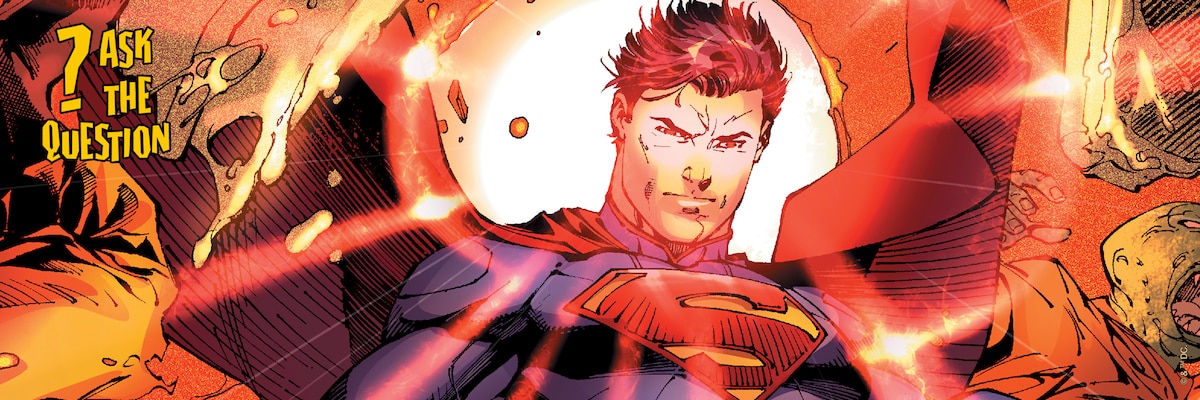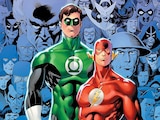Hello, my name is Alex Jaffe. To our illustrious, active DC Community, however, I am better known as HubCityQuestion—a well-studied expert on the broad scope of the DC Universe, here to make my knowledge and research skills available to you in order to solve the great mysteries of our favorite superheroes and the worlds they inhabit. New questions come to me on a daily basis thanks to you, my inquisitive audience, and I do my best to address them all. This month, we’ll examine Superman’s super-vision, the varieties of the H-Dial, and the most classified operation of World War II. Let’s get some answers.
How The War Was Won
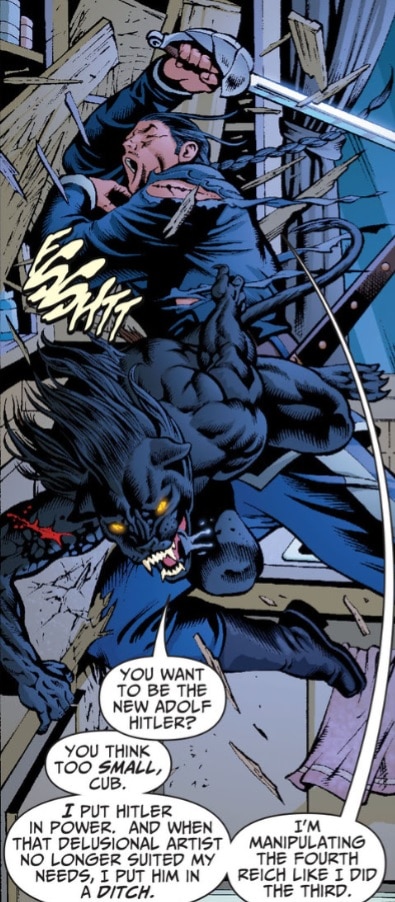
MatthewHecht asks:
Did Vandal Savage (in universe, obviously) kill Hitler? I think lying that he did is in character.
Vandal Savage, as an immortal mastermind older than civilization, claims responsibility for a great many things. The rise and fall of emperors, the construction of great works and civilizations, the very direction of mankind. But, as you say, Savage is also an inveterate liar. After all, anyone who could disprove his stories is dead. Who could challenge him? One might say that Savage is speaking euphemistically here in Justice Society of America #4, that he played a role in Hitler’s rise to power and then conspired to arrange the circumstances which led to his death. How true that may or may not be, we don’t know. But what we do know is that in the DC Universe, Adolf Hitler did not die directly by Vandal Savage’s hand.
Precisely what led to Hitler’s downfall in the DC Universe is a matter of varied sources, each viewing his decline from various angles, though not necessarily contradictory. In 1992’s Armageddon: Inferno #3, the time-traveling Waverider gives an account that Hitler’s abuse of the Spear of Destiny, the instrument which allowed him to prevent American superheroes from directly interfering on the front lines of World War II, consumed his life when he tried to bring the world down with him alongside the fall of the Third Reich. 1982’s Unknown Soldier #268, the last issue of the series, provides a different account—namely that the Unknown Soldier’s final wartime mission was infiltrating Hitler’s bunker to assassinate him and Eva Braun, framing the event as a suicide. Stories in Power of Shazam and The Outsiders would see attempts by the surviving Nazi regime to preserve Hitler’s body, or even to clone him, but all of these efforts have proven futile. Through it all, though, we never directly see Vandal Savage’s hand in the proceedings…though I’m sure he’d claim to have been working behind the scenes. Just remember you can’t trust a super-villain.
The Platinum Age Heroes
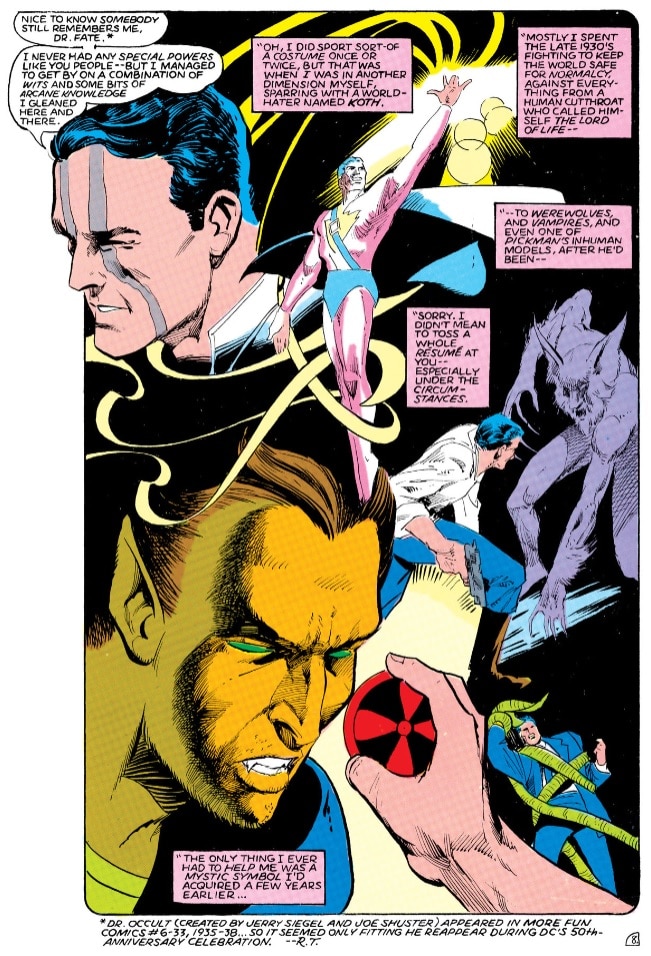
moonknightrider2.9899 asks:
A follow-up to AnuTheWorm’s query. How many pre-Superman characters have actually appeared in the DCU?
In our last column, I told you all about Barry O’Neill, DC’s first wealthy adventurer who appeared in 1935’s New Fun Comics #1 and returned to DC continuity in 2016’s Batman Annual. But while he may be the oldest player with a stake in the DC Universe, he’s not the only original comic book character from the eighty issues between the launch of DC and the debut of Superman to be part of modern comics history. Here are some others you may or may not recognize from that original class:
- Doctor Occult, a Jerry Siegel and Joe Shuster creation widely regarded as the oldest active DC character, debuted first in 1935’s New Fun Comics #1. But he didn’t begin interacting with the greater DC Universe until he was returned from obscurity by Roy Thomas in 1985’s All-Star Squadron #49.
- Steve Carson, also from Jerry and Joe, an FBI agent who debuted in New Comics #2. Carson cameos in a story by Grant Morrison for 2020’s Detective Comics #1027, as one of the patrons in Shamus Flatfoot’s Bar and Grill.
- Zator, servant of the Seven, the group which raised Doctor Occult and who first appeared in 1936’s More Fun Comics #14. Zator is reinstated in Doctor Occult’s history in 1987’s Secret Origins #17, “The Secret Origin of Dr. Occult.”
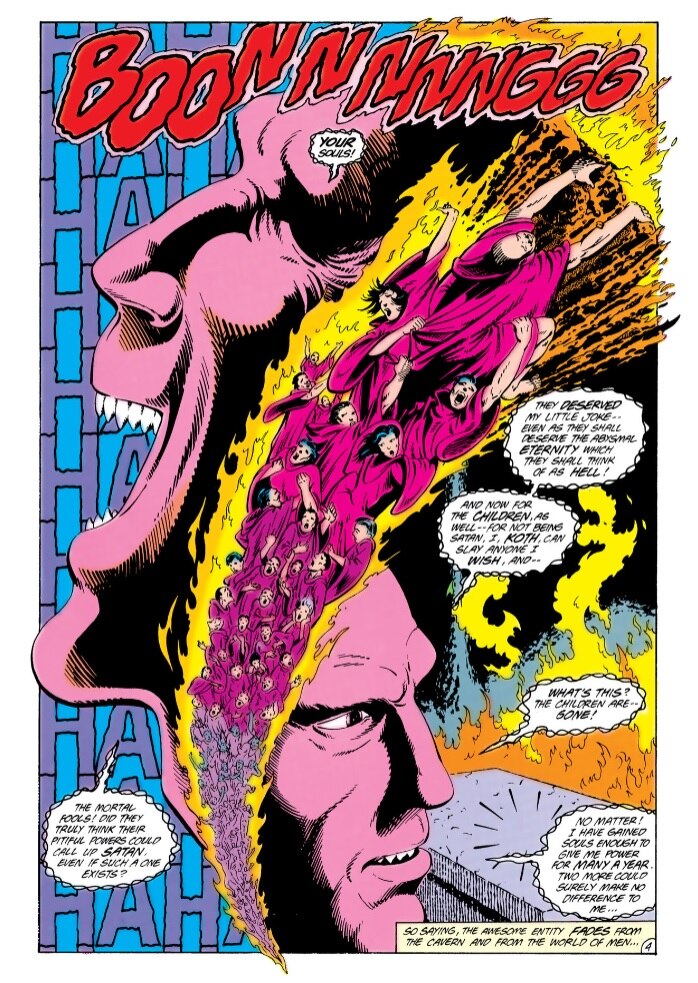
- Koth, a demon whom Doctor Occult battles in 1936’s More Fun Comics #14. Koth returns in Secret Origins #17.
- Jor-L…or at least, an early draft of the character. Jerry Siegel and Joe Shuster introduced a time-traveling scientist by that name from the year 3000 in a Steve Carson story for 1937’s New Adventure Comics #12. They would later recycle the name for the father of Superman.
- Rose Psychic, Doctor Occult’s female counterpart, who debuted in 1937’s More Fun Comics #19. She would find incorporation into the DCU in Secret Origins #17.
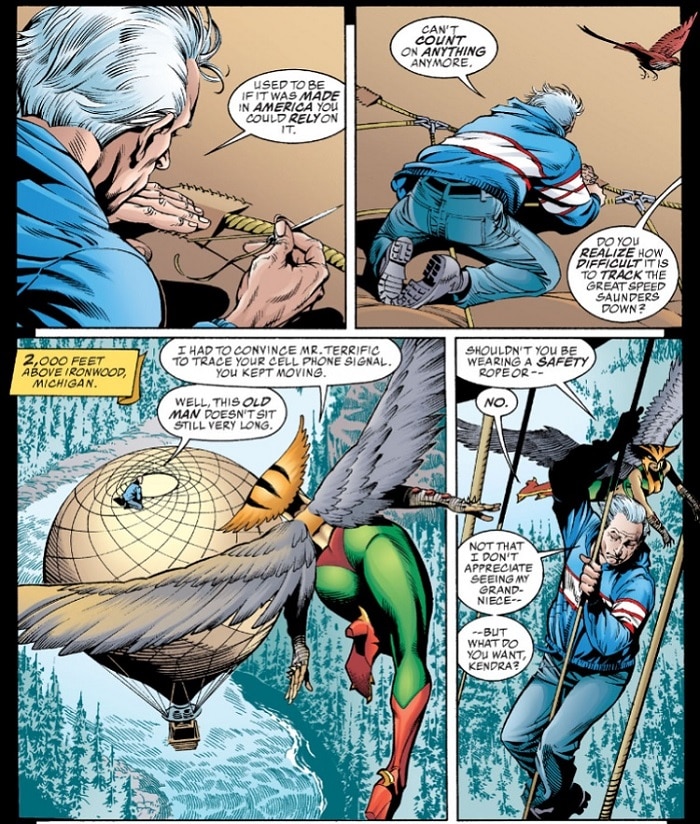
- Speed Saunders, detective, adventurer, and star of the first story in Detective Comics #1. He joined DC continuity in 1999’s Justice Society Returns miniseries, setting up his role as grandfather to the modern Hawkgirl, Kendra Saunders.
- Chin Lung, the Chinese crime lord featured on the cover of 1937’s Detective Comics #1. He’s revealed to be an alter ego of the immortal All-Yang in 2017’s New Super-Man #8.
- Samuel “Slam” Bradley, the most prominent lead detective of Detective Comics before even the Dark Knight, appearing in Detective Comics #1-151. He never crossed paths with Batman in all that time, but he was incorporated into the wider canon for a return appearance in 1981’s Detective Comics #500 alongside many other characters featured in the anthology over the years.
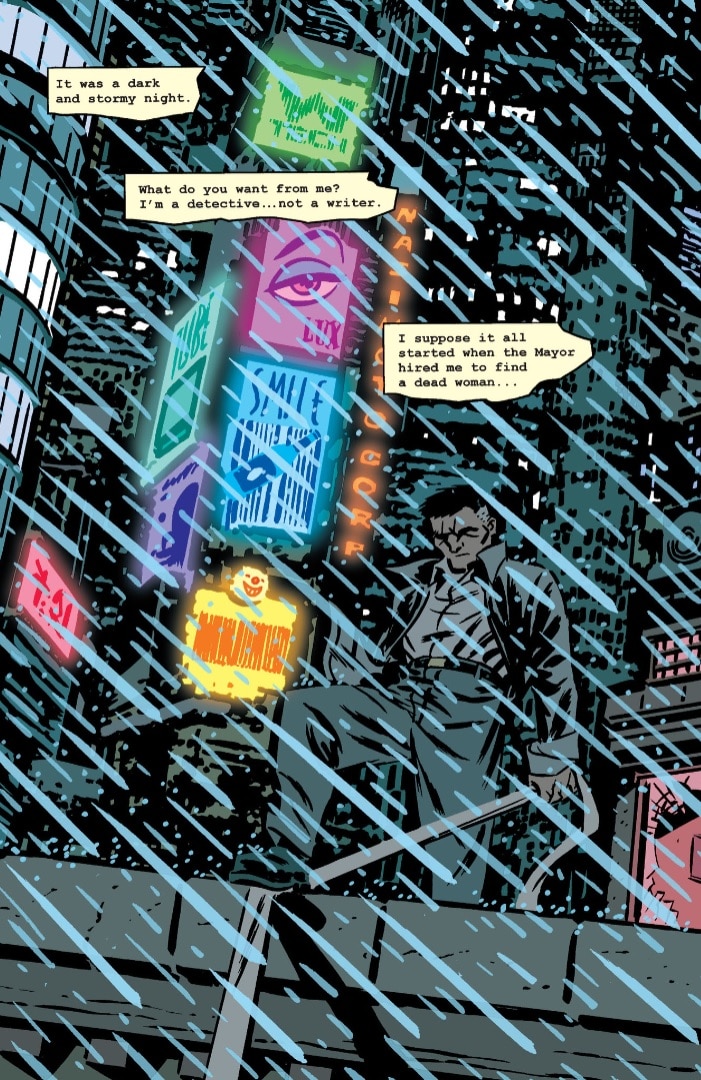
- Shorty Morgan, sidekick to Slam Bradley since Detective Comics #1. He never appeared in a modern comic, but Slam mentions he was murdered by drug dealers in 1987’s Detective Comics #572.
- Sigrid and Erick von Holtzendorff, love interest to Golden Age detective Bruce Nelson and her protective father first appearing in Detective Comics #1. Both appear in a vision of the past crafted by All-Yang in 2017’s New Super-Man #16.
But there’s always room for more in those eighty issues of pre-Superman history. It’s just a matter of time before some enterprising writer seeking to make the deepest of pulls turns back to Jack Woods or Sandra of the Secret Service.
Super Vision Required

Wrightline1.42741 asks:
There was a time in Superman’s history when his x-ray vision served double duty. In addition to allowing the Man of Steel to see through things, if he concentrated enough, those x-rays could melt through anything. At some point, a writer (or more likely an editor) decided that this melting function should be a separate power altogether. Thus was born Superman’s awesome heat vision!
When did this change first appear in the pages of a Superman or Superboy title?
You have your facts right. But like so many changes in comics, it didn't happen all at once. From 1949’s Superman #51 until 1960, applied heat was universally considered a sub-component of Superman’s x-ray vision. Between late 1960 and 1961, heat vision started to be identified as a separate power from x-ray vision in Superman's Girl Friend, Lois Lane #23, a Supergirl story in Action Comics #274 and Adventure Comics #282—but in all three of these instances, the newly categorized power is referred to as "infra-red vision." The first writer to coin the term “heat vision” as a separate application of Superman’s powers was Robert Bernstein with editor Mort Weisinger, in 1961's Superboy #88. Heat vision has been treated as a separate power from x-ray vision ever since.
(Special thanks to Mark Waid for his help with this answer, who wrote in when my initial estimate on the explicit debut of Superman's heat vision as a separate power was off by two weeks.)
Dial-Up Connection
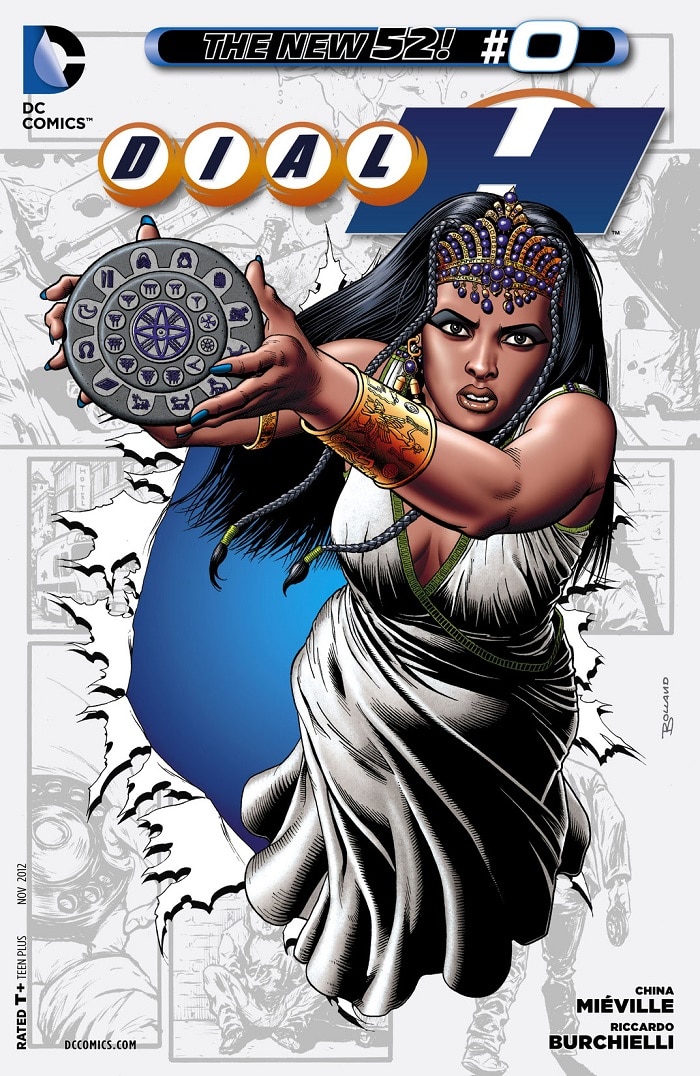
idle453.87595 asks:
I was just reading your “Dial H for Hoo-Boy” column, and you mention an S-Dial. I only knew of a large H-Dial which split into two smaller H-Dials, a V-Dial and I think there was one that dialed terror but I don’t know which dial it was. How many different Dials are there (and where do they appear if it’s not too much trouble)? Finally, have any dialers shown up since Young Justice?
The dial you’re thinking of regarding “terror” was probably “HORROR,” which turns the wielder of an H-Dial when they spell the word out into a monster instead of a superhero.
In addition to the classic H- and V-Dials, the New 52 Dial H series introduces the S-Dial, which transforms the dialer into a sidekick; the J-Dial, which allows the dialer to jump through the multiverse; the G-Dial, which summons a random gadget to its dialer; the Q-Dial, which does the same thing as the V-Dial (that is, transform the dialer into villain); and the Dial Tapper, which can copy any nearby dial.
The Wonder Comics 2019 Dial H for Hero series introduces a different set of dials, also with some overlap. The C-Dial doesn’t summon a random hero, but allows the wielder to access their “inner hero.” The Y-Dial splits the wielder into two heroes. The K-Dial opens a subspace void. And together with the H-Dial, those four can combine to form the M-Dial, which can manipulate the multiverse itself.
After the Wonder Comics Young Justice series, Miguel Montez went on to join Teen Titans Academy, and you can read about his further heroic education there.
Whoooo and How
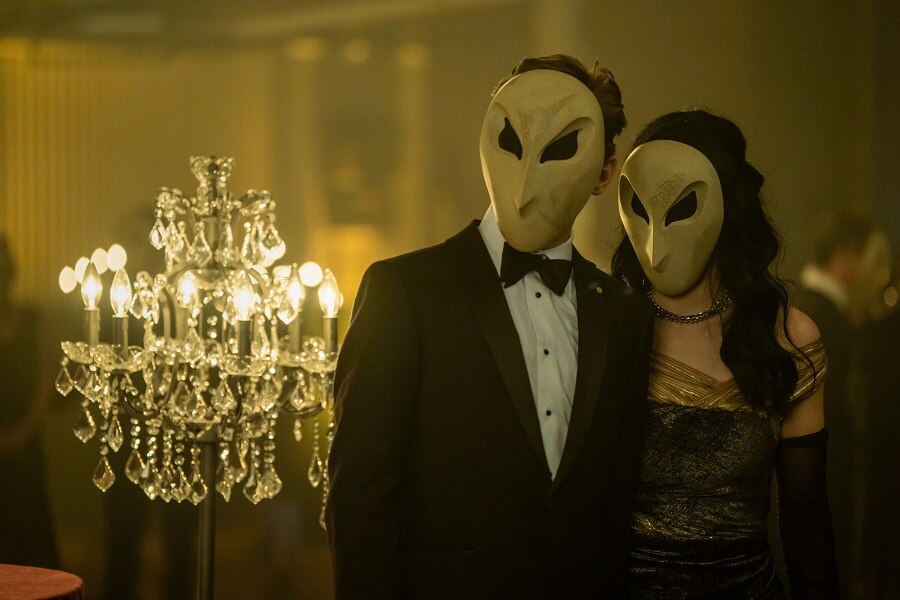
Numbuh1Nerd asks:
On Gotham Knights, we discovered that the Court of Owls had been hunting the Wayne family for generations. Is there any basis for that in the comics? And if so, how has a family that just kinda owns money for a living managed to last this long against a veritable army of zombie assassins?
This is in fact covered in the comics—particularly the back-ups of the New 52’s Batman #9-11, “The Fall of the House of Wayne.” The short of it is that the Owls’ goal is not to hunt the Waynes to extinction, but to redirect them—or, if necessary, cull them—when they step too far out of line at cross-purposes with the Court. It’s important to have a public-facing seat of power people can look to, like the Wayne family, while the real power sleeps beneath the granite and lime.
Don’t Cry for Blood, My Helena
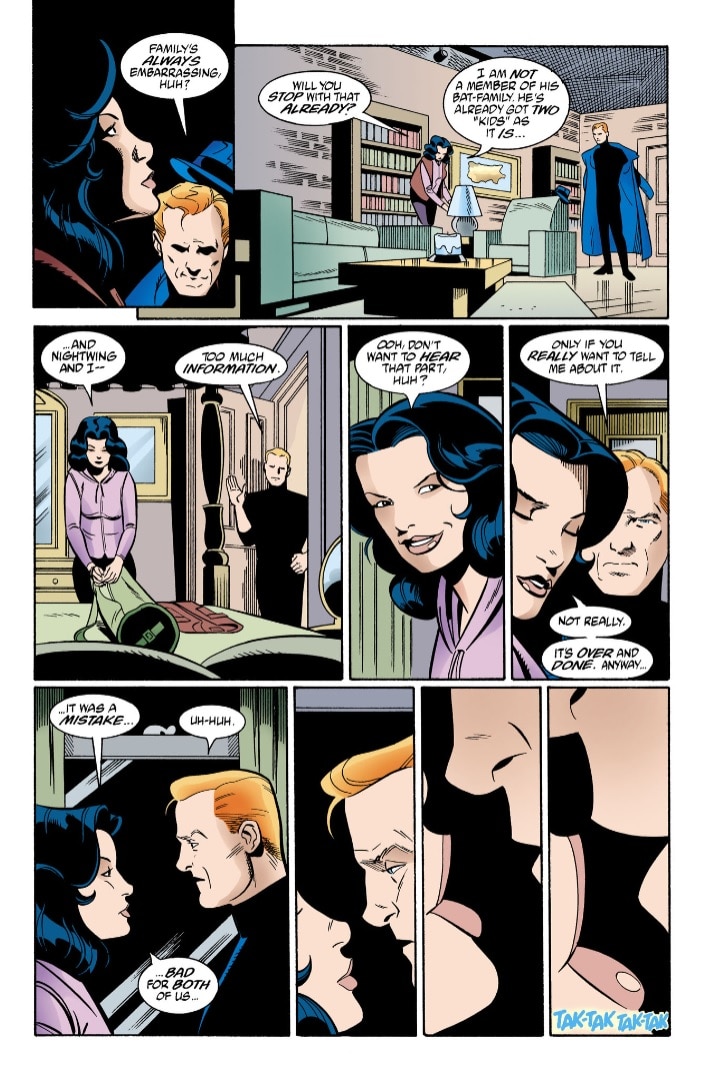
Daredevil asks:
Did Huntress and The Question ever have a relationship in the comics or was that exclusive to the Justice League cartoon?
They did, very briefly! The entire story is told in Batman/Huntress: Cry for Blood, which honestly could have been called Huntress/Question: Cry for Blood, but DC understands that putting Batman’s name in the title of a comic moves copies. In this 2000 miniseries, the Question arrives in Huntress’s life to stop her quest for vengeance from taking her down a road she can’t return from, and ends up personally involved with her while trying to save her soul. The comics’ version of this story ends on a much darker note than the one you know from Justice League Unlimited, with Helena unable to forgive or forget those who took her family away from her—the cry for blood is too strong. That effectively ends their young relationship.
Interestingly, when Gail Simone wrote the “Double Date” episode of JLU which incites the Question/Huntress romance, she had never read Cry for Blood. It was Dwayne McDuffie who suggested Simone use the Question when her original pitch of a Birds of Prey episode featuring Huntress, Black Canary and Oracle was rejected. (The show was legally unable at the time to use any Bat-related characters other than Batman.) From there, a very similar plot to Cry for Blood, but with a completely opposite ending, was serendipitously born.
That does it for us this time around. But we’ll be back with more fresh answers for you sooner than you know it. Just keep sending your inquiries in. There are always more mysteries to solve as long as you continue to ASK…THE QUESTION.
Alex Jaffe is the author of our monthly "Ask the Question" column and writes about TV, movies, comics and superhero history for DC.com. Follow him on Twitter at @AlexJaffe and find him in the DC Community as HubCityQuestion.
NOTE: The views and opinions expressed in this column are solely those of Alex Jaffe and do not necessarily reflect those of DC Entertainment or Warner Bros., nor should they be read as confirmation or denial of future DC plans.
